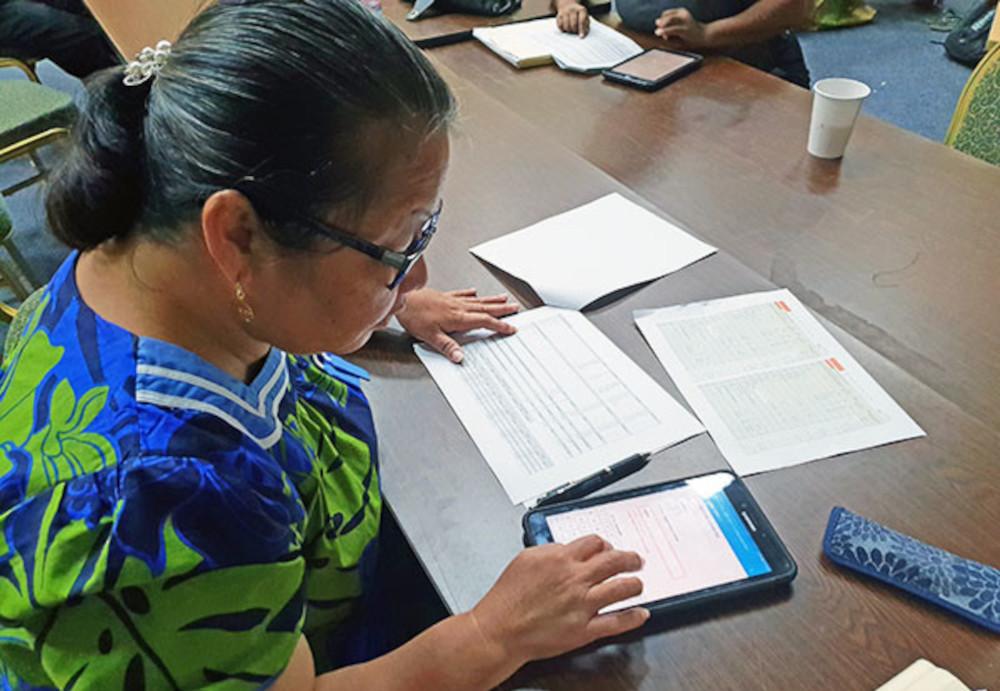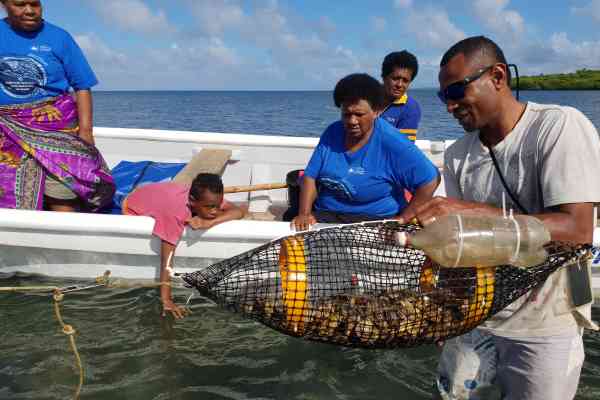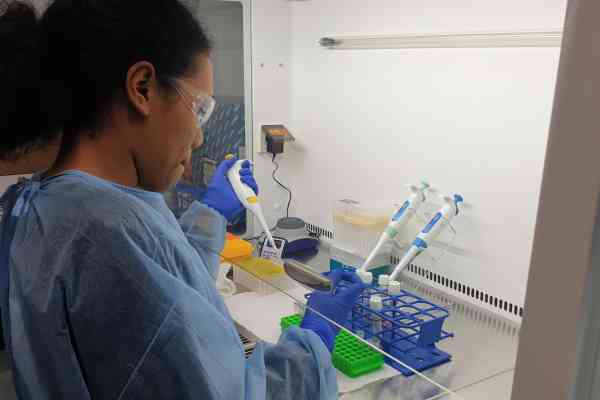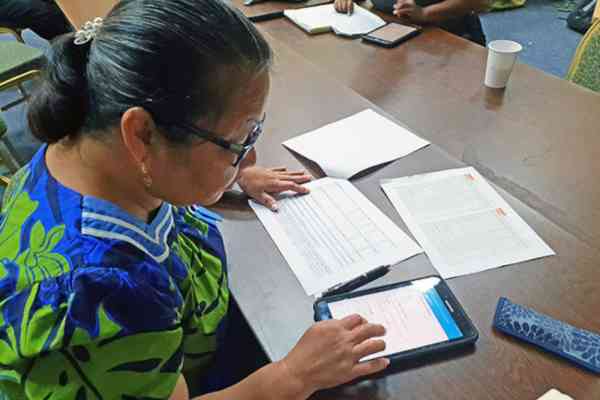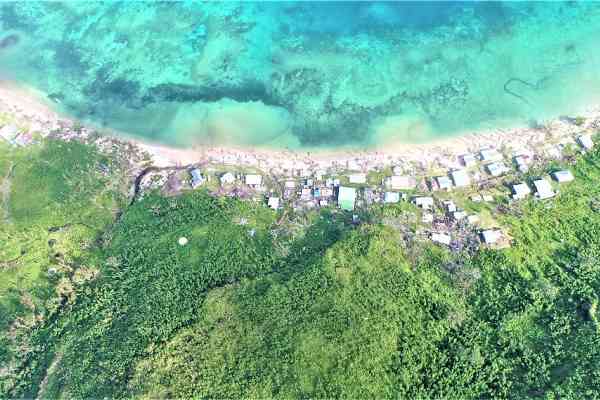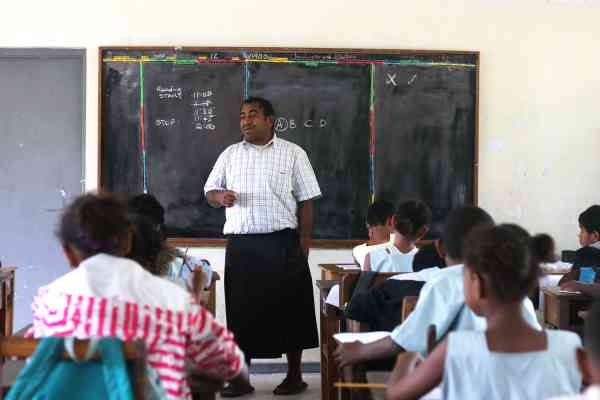(contenu disponible en anglais uniquement)
New methodology transforms the way key development data is collected in the Pacific
In 2018, New Zealand financed, via a fund dedicated to innovation, the piloting of a new method of collecting data related to household income and expenditure. The experience, which took place in the Marshall Islands, would open up new development prospects for the entire Pacific region.
This story is part of a series dedicated to the collaboration between the Pacific Community (SPC) and New Zealand's Ministry of Foreign Affairs and Trade (MFAT), as part of the renewal of their multi-year partnership.
The demand for timely, reliable and disaggregated development statistics is greater than ever before, especially as countries around the world strive to monitor their progress towards Agenda 2030 and the Sustainable Development Goals (SDGs). Household consumption and expenditure data is a key building block in meeting these demands and informing economic and social policy.
According to Kristen Himelein Kastelic, a Senior Statistician at the World Bank: “The global community considers ending extreme poverty to be such an important objective that it is the first Sustainable Development Goal, but without high quality data, we will never know how close we are to achieving this objective. At the national level, high quality data is essential to ensuring that programmes and services have sufficient resources and are properly targeted.”
Critical data on the economic welfare of Pacific households is collected through a Household Income and Expenditure Survey (HIES). For many years, the Pacific Community (SPC) has provided technical support to its member countries and territories to conduct this survey at the national level, using a rigorous method which, obtained excellent data but was tedious for the people being surveyed.
Michael Sharp, an Economic Statistics and Microdata Specialist with the Statistics for Development Division (SDD) of SPC remembers the difficulties in driving the HIES using the old method.
“The previous method was very intense for the respondents,” he explained. “They had to fill in a diary for 14 days to strictly record what kind of food they were consuming, buying or harvesting from their garden. After a while, we started facing serious issues with the quality of the survey because people would get tired of filling the diary. We would often notice that the number of items on day one was higher than the number of items on day 14. That is what we call respondent fatigue.”
This changed in 2018 when the SDD team applied to access the Incubator Fund, set up by New Zealand’s MFAT, which provides grants to innovative projects geared towards the Pacific region. “We wanted to create a new version of HIES, which would be both easier and less expensive to run, and which would include a wider range of indicators to help the countries measure their progresses towards the SDGs,” Sharp explained.
The project was selected by the “Incubator Fund”, and SDD was also able to bring together other partners such as the World Bank to build the new HIES. The Republic of the Marshall Islands (RMI) was chosen as the pilot country because the geographic and demographic characteristics of this Micronesian archipelago were ideal for this life-size test.
“RMI is a unique country in the sense that people from the urban areas live a more Western lifestyle in terms of food consumption, while communities in the outer islands live a subsistence type of life, eating lots of fish, home-grown vegetables, etc,” Sharp said.
The experiment started in mid-July 2018, under the leadership of the Economic Policy, Planning and Statistics Office (EPPSO) of the Government of RMI, with support from SPC and funding from MFAT. EPPSO received new tablets (the recording of data on tablets is one of the innovations of the new HIES) and SPC experts were dispatched to RMI to provide staff from the national statistics office with technical guidance. Michael Sharp was one of them.
“Our counterparts in the Marshall Islands were very welcoming, they were really happy about the project. We gave a full presentation to the government and we received full endorsement from the Secretary of State, and that was very encouraging for us.”
EPPSO and SPC hired some local workers to travel across RMI to collect the data. The work was not easy: for the first time, HIES included new modules on food insecurity, climate change, labour market and disability. Another challenge was the use of tablets in a low connectivity environment.
However, despite the challenges, the operation was a success, both in terms of quantity and quality of the data collected. Moreover, this new method drastically lowers the cost of HEIS; the new survey costs six times less than the old one.
Following the RMI HIES experiment, the new method was adopted and implemented in the 2019/20 surveys of Kiribati, Marshall Islands and Vanuatu, and soon, other Pacific Island countries will start using the new method. “I think that in the next three years or so, all of the Pacific Island countries will have conducted at least one survey using this new method. That will allow them to report against 15 per cent of the Pacific indicators of the SDGs” Sharp explained.
This new experience was made possible thanks to continued support from MFAT. What was appreciated the most by the team was the freedom to use the funds, according to Michael Sharp, “where it was needed, for the sole purpose of making the experience a success.”
With many countries in the process of adopting it, the new HIES methodology is a great example of how an innovative project can be taken to scale. It also opens up new possibilities for development programmes across an entire region.
“The new method offers us the possibility to collect new indicators – disability, anthropometric, food insecurity… the sky is the limit,” Sharp explained. “If we then combine consumption data with health and food security data, we can start to unpack a whole range of new responses against non-communicable diseases, for example. Of course, this is just an example of what we can achieve with better data,” he added.
Story written by Alexandre Brecher, Corporate Communications Office
